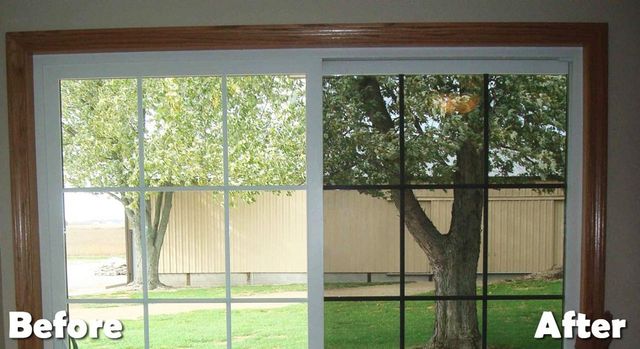How Residential Window Tinting Enhances Your Home's Power Performance
Residential window tinting offers an engaging solution for home owners seeking to enhance energy performance within their living rooms. By applying specialized movies to home windows, it properly minimizes warmth transfer, therefore supporting indoor temperature levels and lessening the need for excessive heating or cooling.
Understanding Window Tinting
Recognizing window tinting is important for home owners seeking to enhance both convenience and power effectiveness in their home. Residential Window Tint. Window tinting includes the application of a slim movie to the inside or outside surface of glass windows. This film can dramatically modulate the quantity of sunshine and warmth that goes into a home, therefore influencing indoor environment problems
There are numerous kinds of home window tinting films available, each with unique homes. The efficiency of home window tinting is usually determined by its Visible Light Transmission (VLT) percent, which suggests just how much light can pass with the film.
Advantages of Power Performance
Home window tinting not just boosts appearances yet additionally plays a significant duty in boosting power performance within property spaces. By minimizing warm transfer with windows, tinted films create a more steady interior climate, which can lead to substantial reductions in power intake for cooling and heating. This energy efficiency equates right into reduced utility costs, giving homeowners with significant long-lasting cost savings.

Additionally, window tinting improves the comfort of living areas. By reducing glare and blocking hazardous UV rays, colored home windows create an even more enjoyable environment, which can bring about enhanced well-being for owners. The security against UV rays also helps maintain furnishings and flooring from fading, adding to the durability of family things.
Just How Tinting Functions
Tinting movies operate through a mix of advanced products and technologies designed to control the quantity of solar power entering a home. Primarily composed of polyester, these movies often incorporate metallic or ceramic particles that absorb and mirror warmth. This dual capacity allows them to considerably decrease the penetration of ultraviolet (UV) rays and infrared radiation while permitting visible light to pass through.
The performance of window tinting is measured by its solar warm gain coefficient (SHGC), which suggests just how much solar energy is transferred through the home window. Lower SHGC values are more suitable as they denote better heat denial. Additionally, window tints can include a variety of tones, enabling house owners to customize their visual choices while go to this website boosting power effectiveness.
Additionally, these films websites serve as an obstacle, protecting against warm loss during cooler months by mirroring interior heat back into the home. This thermal insulation impact matches the cooling advantages gotten throughout warmer months, adding to a balanced indoor environment year-round. By managing solar power successfully, domestic home window tinting not only boosts comfort yet also plays a crucial duty in lowering energy usage and lowering energy expenses.
Picking the Right Color

There are numerous kinds of home window films available, including dyed, metalized, and ceramic. Ceramic movies offer exceptional warmth control without compromising exposure and are very resilient, making them a popular choice.
Noticeable light transmission (VLT) is an additional important element, as it indicates the amount of all-natural light that can go through the tinted glass. Home owners ought to pick a color with a VLT that enhances their lights preferences while still supplying sufficient glow decrease.
Furthermore, analyzing the solar warmth gain coefficient (SHGC) can assist identify how well a color can obstruct heat from sunlight. A lower SHGC suggests much better warm control, inevitably enhancing energy efficiency.
Installment and Maintenance Tips
Appropriate installment and maintenance are vital parts in maximizing the benefits of household home window tinting. Specialists additionally utilize specialized strategies and tools, which can enhance the durability and effectiveness of the tint.
Complying with setup, upkeep is essential to lengthen the life of the window film. It is advised to wait at least 30 days prior to cleaning the colored windows to permit the glue to heal totally.
Additionally, routine examinations are useful. Look for any peeling or bubbling, which can suggest incorrect installation or put on with time - Residential Window Tint. Attending to these concerns quickly can protect against her response additional damages and preserve power efficiency. By sticking to these setup and maintenance tips, homeowners can ensure their window tinting continues to offer considerable energy savings and convenience for years to find.
Final Thought
To conclude, domestic window tinting functions as an effective option for improving power effectiveness within homes. By reducing warmth transfer and obstructing unsafe UV rays, home window movies add to reduce power intake and enhanced indoor comfort. The selection of proper tinting materials, in addition to appropriate installation and maintenance, further optimizes these advantages. Ultimately, home window tinting stands for a sustainable financial investment that not only reduces energy expenses yet also promotes a comfortable living setting throughout the year.
Home window tinting entails the application of a thin film to the interior or exterior surface area of glass home windows. By lowering warm transfer via windows, colored movies develop a much more stable indoor climate, which can lead to significant decreases in power usage for heating and air conditioning.The performance of home window tinting is determined by its solar heat gain coefficient (SHGC), which shows exactly how much solar power is sent with the home window. By handling solar energy effectively, household window tinting not just enhances convenience however likewise plays a crucial role in decreasing power intake and decreasing utility bills.
By decreasing warm transfer and obstructing damaging UV rays, window films add to reduce energy consumption and improved indoor convenience.
Comments on “Leading Residential Window Tint Installers Near You: High quality and Proficiency”